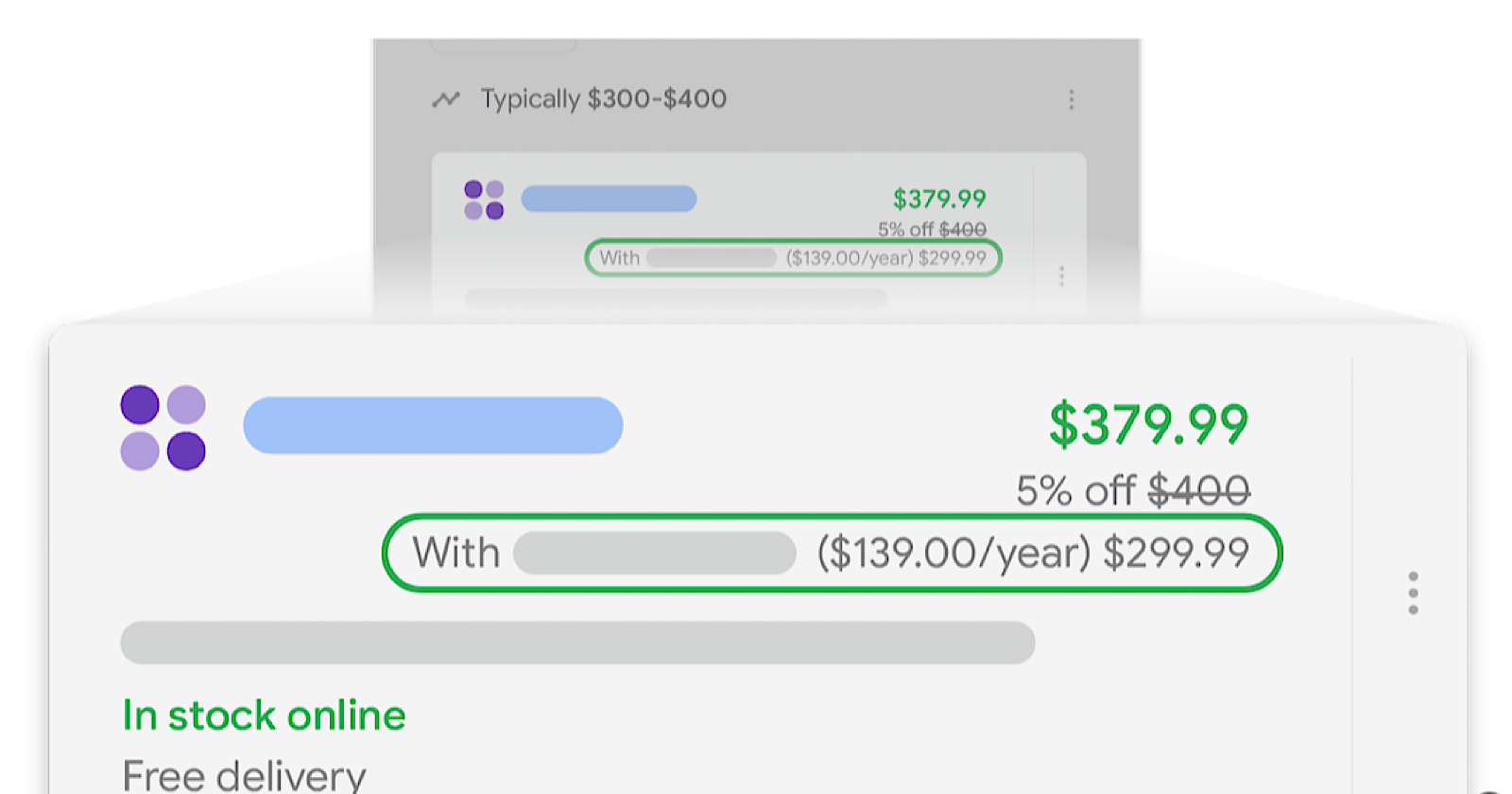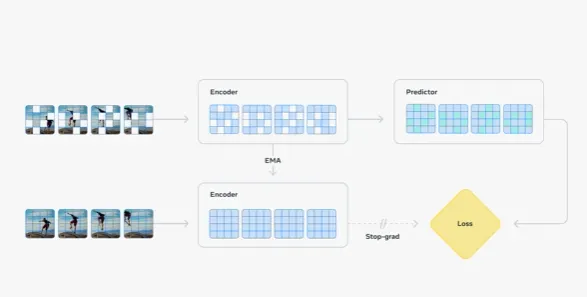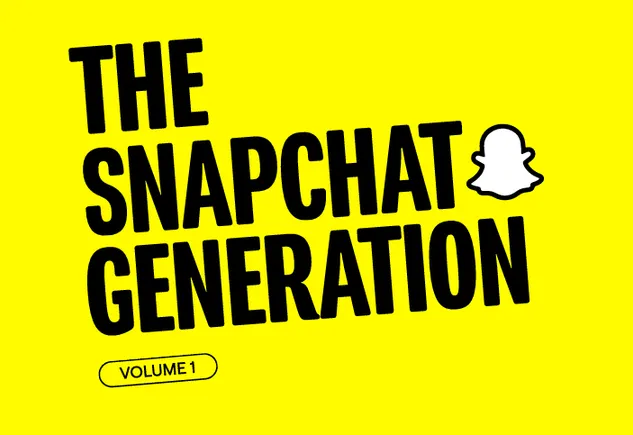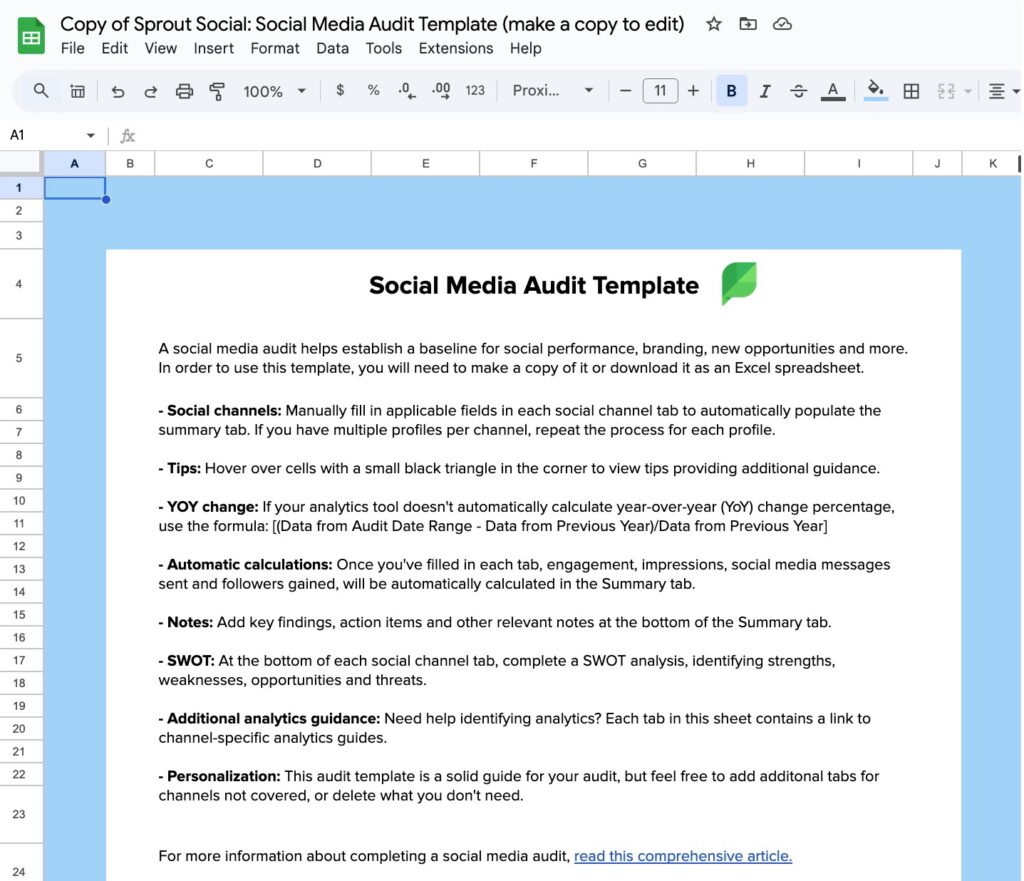A complete guide to creating a social media calendar (plus template)
Social media practitioners and managers know it’s easy to get caught up in the day-to-day of managing multiple social media accounts, especially with a Read more... The post A complete guide to creating a social media calendar (plus template) appeared first on Sprout Social.
Social media practitioners and managers know it’s easy to get caught up in the day-to-day of managing multiple social media accounts, especially with a constant flow of new content, news and ideas. That’s why creating a social media plan and maintaining a strategic, organized social media calendar is so essential.
A well-built social media content calendar helps you stay consistent, plan strategically and collaborate seamlessly. This step-by-step guide walks you through creating a high-impact content calendar and supplies a free calendar template.
What is a social media calendar?
A social media calendar is a strategic, hyper-detailed plan of upcoming posts for all your social channels organized by publish date and time. Along with the publish date and time for posts, your social media calendar can also include links, tags, @-mentions, copy and media, such as images and video.
You can use a digital calendar, spreadsheet or a social media management platform like Sprout Social that offers an interactive dashboard and the ability to schedule posts.
Benefits of using a social media calendar
A content calendar is the key to a successful social media plan because there are so many benefits to using one, from saving time to streamlining collaboration.
Here are a few:
1. Saves time and widens team bandwidth
A social media calendar saves your team time by keeping them organized, especially when they’re managing multiple accounts. That way, they’ll have more time to focus on creating high-quality content.
As a social media manager, planning out a social calendar months in advance saves you from scouring trending topics and news stories every day for ideas. It’ll also give you more bandwidth to track and test different strategies to see what resonates most with your target audience.
2. Maintains a consistent posting schedule
There’s no hard rule for how much you should post, but it’s important to post frequently to maintain an active presence.
A social media content calendar allows teams to prioritize quality, not quantity. Plus, planning will build greater consistency in terms of your brand voice and style rather than posting in a reactive or unplanned way.
3. Ensures quality and protects brand reputation
Proactive scheduling allows social teams to check their work and protect their brand’s reputation. It’s easier to catch a typo or prevent a potential public relations crisis when you aren’t rushing and a workflow approval process is in place. Using a social media calendar will help you catch these mistakes sooner rather than later.
4. Streamlines cross-functional collaboration
A well-crafted social media calendar gives everyone visibility into upcoming content, helping teams align around key deadlines, campaigns and responsibilities. A shared view streamlines cross-functional collaboration, minimizes last-minute scrambles and keeps social efforts in sync with broader marketing goals.
By working from a clear, centralized calendar, teams can stay organized, meet deadlines more consistently and ensure that messaging remains cohesive across departments.
5. Optimizes approval workflows
Social media calendars are instrumental in streamlining approval workflows within organizations. By providing a visual overview of planned content, these calendars establish clear communication between teams and align everyone on objectives, timelines and expectations for execution.
A centralized approach to content scheduling simplifies the approval process because it provides simultaneous visibility among contributors and stakeholders. This ensures that all participants understand the steps involved for reviews, iterations and approvals. Having everyone on the same page will support timely approvals, prevent bottlenecks and maintain a consistent flow of quality content.
6. Supports planning for product launches, campaigns and events
Social content calendars streamline cross-functional collaboration and workflows and facilitate strategic planning for product launches, campaigns and events. For example, your team can ensure that its social media posts sync up with larger campaigns so stakeholders can easily view what you’ve planned and provide feedback, if necessary.
Because social media calendars empower teams to align on timing, content types, key milestones and deadlines, they support meticulous planning that effectively highlights and promotes each phase of a launch or event. This strategic alignment also keeps messaging consistent across all channels.
7. Enables strategic content repurposing
Calendars can also help with repurposing content for social media. Maintaining a record of past posts and their performance metrics will help you spot high-performing content that’s easy to recycle or adapt.
Repurposing content helps teams save time and resources while consistently delivering engaging content. This approach enhances your content strategy and strengthens engagement over time.
8. Improves engagement and performance tracking
Social media content calendars enhance the effectiveness of social media reporting by providing a framework for tracking performance and engagement.
If you use a social media management software like Sprout, you can maintain your content calendar and reporting in one place. For example, the Post Performance Report highlights your top-performing content and shows exactly when you published it. This can help you identify posts with spikes in engagement and fine-tune your social media content as necessary.
Types of social media content calendars (and a template)
There are various social media content calendars you can use to address your different needs. Let’s review some of them, along with a social media calendar template you can use:
Sprout’s social media calendar
Marketers plan content for different timeframes: daily, weekly and monthly, making it essential to use tools that support flexible planning. Sprout’s Publishing Calendar makes this easier by streamlining long-term and short-term content planning and execution.
Instead of using separate calendars for each cadence and social network, you can use Sprout’s calendar—it has weekly and monthly views where you can plan and schedule content across multiple networks. This makes it easy to see your content schedule at a glance and enables you to make changes as necessary. Cross-network visibility enables you to maintain a cohesive social media strategy, optimize your publishing cadence and tailor messaging for each network.

‘Best time to post’ social media calendar
Social media planning isn’t just about publishing content consistently—time is another major factor because it can impact your reach and engagement. The best times to post on social media vary by network and when your audience is active. To nail down the timing, you can use a weekly social media calendar that outlines ideal publishing times.
Social media calendar templates
Instead of creating new calendars from scratch each week or month, use social media calendar templates to save time and effort. To help you stay organized, improve visibility and align your content with your key performance indicators (KPIs), take advantage of this downloadable template.
How to create a social media calendar
An effective social media calendar goes beyond merely organizing posts—it helps you align content with your goals, keep the entire team in the loop and focus on execution without scrambling at the last minute to finalize topics, assets or posting schedules.
With Sprout, you can build and manage a content calendar that brings your social media content to life, from planning to publishing to performance tracking. Here’s how to do it:
Connect your social media accounts to Sprout
Start by connecting your brand’s social profiles to Sprout. Once connected, Sprout centralizes your efforts, enabling you to plan, publish and monitor content across all your social channels from a single, streamlined dashboard—eliminating the need to toggle between multiple tools.
Here’s how to connect your social media profiles:
1. Go to Account and settings > Connect a Profile.

2. Choose the networks you want to connect—Facebook, Instagram, LinkedIn, Pinterest, TikTok or X (formerly Twitter).

3. Follow the prompts to authorize access.
Connect your social profiles to Sprout to unlock a unified publishing strategy, saving valuable time, minimizing manual tasks and fostering seamless team collaboration across all your social media accounts.
Conduct a social media audit
Before you start scheduling and publishing, take stock of your current content and its performance. This involves assessing what content is still performing well, what needs a refresh or archiving and what’s missing altogether.
For example, you open Sprout’s Post Performance Report and uncover insights such as your behind-the-scenes Reels outperforming product photos on Instagram or your LinkedIn engagement dropping every Friday. These insights help you determine what to keep doing, what to change and where to fill crucial gaps.
Sprout makes it easy to conduct an audit with built-in performance reporting for each connected profile. Navigate to the Reports tab in the left-hand navigation bar, your central hub for all your account and profile performance data.
Here’s what to look for:
- Metrics per network: Define success for each platform (such as clicks and conversions on Instagram, impressions on X or shares on LinkedIn).
- Profile performance: Track follower growth, impressions, clicks and engagement per profile with Sprout’s Profile Performance Report.
- Post performance: Use the Post Performance Report to analyze which posts performed the best (and worst) across your social media accounts.
- Tag performance: Evaluate how different content categories (like “campaign,” “product” or “event”) perform using Sprout’s Tag Performance Report.
- Publishing behavior: Visualize your post frequency by day, time and social channel to easily identify gaps and fine-tune your publishing cadence.

As you audit your content, analyze your competitors to help gauge your success. Pay close attention to what they’re posting, how often and how much engagement they get.
Sprout’s Competitor Posts Report simplifies this process, enabling you to see competitors’ top-performing posts, compare engagement metrics side by side and surface trends in their content strategy from a single view. It’s a quick way to spot what’s working for others in your industry.
Sprout Tip: Export PDF reports to share with your team or stakeholders, turning your audit into a data-backed pitch for what to keep creating and what to revisit or avoid.
Not sure where to start? Download our free social media audit template to guide you through the audit process step by step. It’s also customizable, so you can tweak it to align with your goals.
Select your social media channels, content types and posting cadence
Consumers aren’t just scrolling through social media feeds—they’re shopping on them. According to Sprout’s 2025 Index Report™, Facebook leads the way, with 39% of consumers making purchases there, followed by TikTok at 36% and Instagram at 29%. This highlights the value of tailoring your content strategy to where your audience is most engaged.
To tailor your content strategy, begin by aligning it with the channels your audience uses to engage and shop. Here’s how you can do that:
Choose the right networks for your audience
You don’t have to be present on every social media network. Where your audience spends time—and how they behave there—should guide selection.
For example:
- Instagram and TikTok are for visual storytelling and short-form video.
- LinkedIn is for B2B brands and thought leadership.
- Pinterest drives discovery and is great for evergreen content.
Match content types to goals
Your social media calendar should feature a mix of content formats to meet different marketing objectives. This content variety keeps your feed fresh and reaches your audience in multiple ways, whether the goal is to educate or entertain them. Sprout’s 2024 Content Benchmarks Report revealed that short-form videos lead in engagement across most social networks, with 81% of viewers favoring them.
But it’s not about what’s popular or chasing trends. The content formats you choose should resonate with your audience and your goals. Here’s how to match content types to your goals:
| Goal | Best content types |
| Build brand awareness | Reels, TikTok videos, branded intro videos and influencer collaborations |
| Drive engagement | Polls, Q&As, interactive Stories and carousels |
| Generate conversions | Testimonials, product demos, limited-time offers and strong CTAs |
| Educate your audience | How-to content, blog excerpts, infographics and expert quotes |
| Earn trust and loyalty | Behind-the-scenes videos, user-generated content and employee features |
You can level up your content strategy with Sprout’s listening tools. Leverage social listening for competitive research to identify the high-performing content types, keywords, hashtags and topics your audience is already interacting with. This helps you deliver relevant and high-intent content where your audience is already active.
Define your posting cadence
There’s no magic number for how often to post. It depends on your audience, network-specific norms and internal bandwidth.
That’s where Sprout’s ViralPost® comes in—it automatically identifies the best times to post, taking the guesswork out of posting cadences by analyzing your audience’s engagement patterns and recommending optimal send times for each network you use.

To further optimize your posting strategy, consider the patterns that surfaced from your audit and competitive analysis. Study each social network’s publication dates and times to determine specific themes. This information helps you organize and plan your posts for maximum visibility.
Organize your campaigns with Sprout’s Asset Library
Sprout’s Asset Library allows you to upload and store various asset types, including images, videos and text snippets. This centralized repository gives your team access to approved, on-brand content, helping them avoid last-minute scrambling, time-consuming file searches or grabbing outdated materials.
Maintaining a library of consistently branded visuals, voice and messaging for use across your social media accounts boosts brand recognition and campaign ROI by building audience trust and engagement.
Sprout’s Asset Library makes organizing assets by campaign straightforward with its tagging system. To upload an asset, take the following steps:
- Head to Publishing > Asset Library.
- Click + Add New and select the asset type (image, video or text).
- Fill in asset details, including title, description and any relevant tags.
- Click Add Asset to upload.
Sprout supports JPEG, PNG, GIF (up to 20MB), MP4 and MOV (up to 3GB).
Here’s how to organize your assets using folders in Sprout’s Asset Library:
Organize assets with folders
Once you upload your assets, maintain a tidy library by categorizing assets into folders based on campaigns, content types or themes.
Here’s how to create a folder:
- In the Asset Library, click the folder icon in the top-right corner.
- Select Add Folder.
- Name your folder (for example, “Spring Launch 2025”).
- Click Create Folder.
To add assets to a folder, do the following:
- Select the assets you want to move by checking the boxes next to them.
- Click Move to Folder at the top.
- Choose the appropriate folder and confirm.

Tag assets to categorize campaigns better
Tag your assets with relevant campaign identifiers to make them easily discoverable. This helps you better organize assets and ensures seamless integration into relevant campaign workflows.
Tagging assets also helps you automatically surface relevant assets when creating new campaigns, saving time searching for materials that align with campaign themes or objectives.
Here are quick steps to tag assets for better campaign categorization:
- Create a campaign
Before you can tag assets, you’ll need to set up your campaign in Sprout:
- Navigate to Publishing > Campaigns > Active Campaigns.
- Click Create Campaign in the upper right corner.
- Fill in campaign details, including the name, description and any relevant tags.
- Click Create Campaign to save.

- Tag assets within the campaign
Once you set up your campaign, you can associate its assets. Here’s how to tag existing assets:
- Go to Publishing > Asset Library.
- Click on the asset you want to tag.
- In the asset details pane, find the Campaign dropdown.
- Select the appropriate campaign.
- Click Save Asset.

- Filter assets by campaign
To view assets for a specific campaign, do the following:
- In the Asset Library, use the Filter option.
- Select the campaign you need from the Campaign filter.
Filtering by campaign helps you quickly find the assets you need. No need to scroll through a list of options, you can keep content creation moving without losing focus.
Automate content approval workflows
Content approvals can slow things down when a team doesn’t have a process in place. A streamlined approval process speeds up content creation and helps you publish content consistently and on time. A straightforward approval workflow directly contributes to production efficiency, which, according to the Index, is the number one way social teams measure success internally.
Sprout makes it easy to build approval workflows so your posts can move seamlessly from draft to publish without bottlenecks or back-and-forth emails.
Here’s how to set up an approval workflow with Sprout:
- Go to Settings > Approval Workflows.
- Click Create New Workflow.
- Give it a name (like “Marketing Team” or “Legal Review”).
- Assign relevant approvers.

- Choose whether all approvers must approve a step or if any one approver makes sense.
- Click Save.
With an efficient approval workflow and designated approvers, you can seamlessly approve each post before it goes live.
Need sign-off from someone in legal, a client or someone in another department who’s not an assigned approver in your Sprout workflow? Sprout’s External Approvers capability enables you to email them a review link so they can approve, reject or leave comments—no login required. Just add their email when assigning an approval, and Sprout will handle the rest.

Track content approval status
To keep things moving, head to the Needs Approval section under Publishing. You’ll see:
- Posts awaiting review
- Remaining approvers
- Any feedback or change requests
Plus, instant notifications of approvals or rejections eliminate delays and doubts about when to proceed.
Schedule and automate posts in Sprout
Once your content is ready, don’t just post it on the fly. Scheduling ahead helps you stay consistent, avoid last-minute scrambling and engage your audience at optimal times.
With Sprout, you can plan, schedule and automate posts across all your social media accounts from a single dashboard.
Here’s how to queue up your posts:
- Click the green Compose button in the top-right corner.
- Choose which profiles to post to (Instagram, LinkedIn, X, etc.).
- Add your text, upload your image or video and preview the post on each selected network.
- Manually set the posting time or click Use Optimal Send Times to let Sprout pick the best time based on your audience data.
- Click Schedule.
Sprout Tip: Set a default schedule using ViralPost® in your Publishing Settings. That way, your team won’t have to think about timing every time they hit Schedule.
Track performance in Sprout’s dashboard
Your social media calendar isn’t just a planning tool. It’s also a way to track and measure metrics across every network you use. Use it to analyze what’s working, what’s not and how you can continuously optimize your social media calendar.
As you review your campaigns, focus on collecting key performance indicators like engagement rates, impressions, clicks, conversions and audience growth. These insights help you understand how your content resonates with your audience and where to adjust your approach.
Sprout makes this easier with various social media reports that serve different purposes. For example, the Post Performance Report helps you identify top-performing content, while the Campaign Report provides a high-level view of how individual campaigns drive results. You can also use the Profile Performance and Tag Performance reports to get insights into network-specific trends or track content by themes or goals.

To learn more about managing campaigns in Sprout, explore this detailed guide on creating a campaign performance report.
Social media calendar apps
There are many social media management tools and social media scheduling tools to choose from. Here’s a quick overview of our top two favorite tools:
Sprout Social
Sprout’s tools will genuinely empower your social media team. The interactive content calendar and publishing and scheduling tools increase visibility, improve team efficiency and boost customer loyalty, so social teams have more bandwidth for creative efforts. For instance, you can follow up on your scheduled posts by establishing a process for responding and engaging with your audience in the Smart Inbox.
Essentially, Sprout’s interactive content calendar enables you to manage the social experience from beginning to end.

Google Calendar and Sheets
Google Calendar and Sheets are free, fairly intuitive tools with many social media calendar templates. Both apps allow for easy viewing of upcoming posts and drive collaboration through feedback and comments.

Notion
Notion is a powerful note-taking app, but it’s also a tool for marketers. The app has a database feature that can be used to create templates, including social media calendars. Notion is highly customizable and collaborative, so users can easily view the status of content and give feedback via comments all within one platform.
Ground your planning with a social media calendar
Your time is too valuable to spend deciding what to post every day. With a well-planned social media content calendar, you can eliminate the daily guesswork and free up time to focus on long-term planning and other key aspects of your marketing strategy.
You can create a social media calendar from scratch, but using a template and personalizing it to your brand’s needs will save you time while ensuring that you have all the essential components. Sprout’s social media calendar template makes organizing and optimizing content planning easy. With Sprout’s Instagram, Facebook, TikTok and LinkedIn integrations, you can easily create, schedule, publish and engage with social posts.
Try Sprout for free—sign up using your business email today.
The post A complete guide to creating a social media calendar (plus template) appeared first on Sprout Social.

























![Brand and SEO Sitting on a Tree: K-I-S-S-I-N-G [Mozcon 2025 Speaker Series]](https://moz.com/images/blog/banners/Mozcon2025_SpeakerBlogHeader_1180x400_LidiaInfante_London.png?auto=compress,format&fit=crop&dm=1749465874&s=56275e60eb1f4363767c42d318c4ef4a#)

![How To Launch, Grow, and Scale a Community That Supports Your Brand [MozCon 2025 Speaker Series]](https://moz.com/images/blog/banners/Mozcon2025_SpeakerBlogHeader_1180x400_Areej-abuali_London.png?auto=compress,format&fit=crop&dm=1747732165&s=beb7825c980a8c74f9a756ec91c8d68b#)
![Clicks Don’t Pay the Bills: Use This Audit Framework To Prove Content Revenue [Mozcon 2025 Speaker Series]](https://moz.com/images/blog/banners/Mozcon2025_SpeakerBlogHeader_1180x400_Hellen_London.png?auto=compress,format&fit=crop&dm=1747758249&s=9f3c5b1b7421f862beace1cb513053bb#)






















![The 11 Best Landing Page Builder Software Tools [2025]](https://www.growthmarketingpro.com/wp-content/uploads/2024/04/best-landing-page-software-hero-image-1024x618.png?#)




































![Is Google About To Bury Your Website? [Webinar] via @sejournal, @lorenbaker](https://www.searchenginejournal.com/wp-content/uploads/2025/06/3-271.png)












![Marketers Using AI Publish 42% More Content [+ New Research Report]](https://ahrefs.com/blog/wp-content/uploads/2025/06/marketers-using-ai-publish-42-more-by-ryan-law-data-studies-1.jpg)
















![Social media image sizes for all networks [June 2025]](https://blog.hootsuite.com/wp-content/uploads/2023/01/Social-Media-Image-Sizes-2023.png)

![The HubSpot Blog’s AI Trends for Marketers Report [key findings from 1,000+ marketing pros]](https://www.hubspot.com/hubfs/state-of-AI-1-20240626-53394.webp)
![AI can boost conversions from your web page — HubSpot’s CMO shows you how [tutorial]](https://knowledge.hubspot.com/hubfs/ai-1-20250605-395473.webp)
![The state of inclusive marketing in 2025 [new data + expert insight]](https://www.hubspot.com/hubfs/inclusive-marketing-report.webp)























